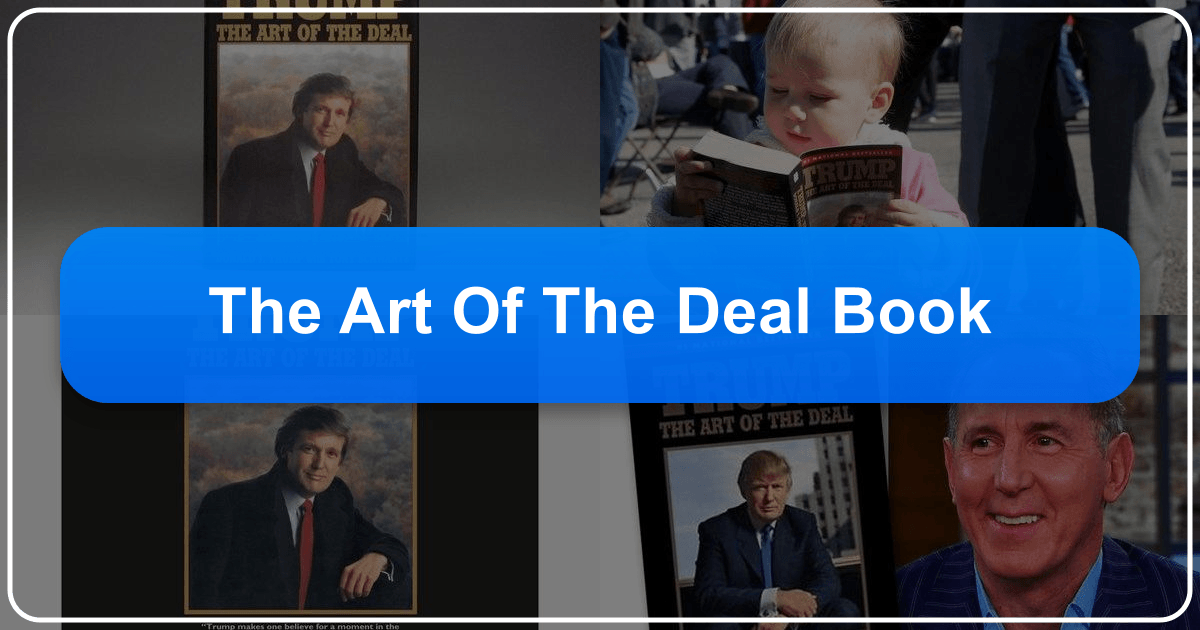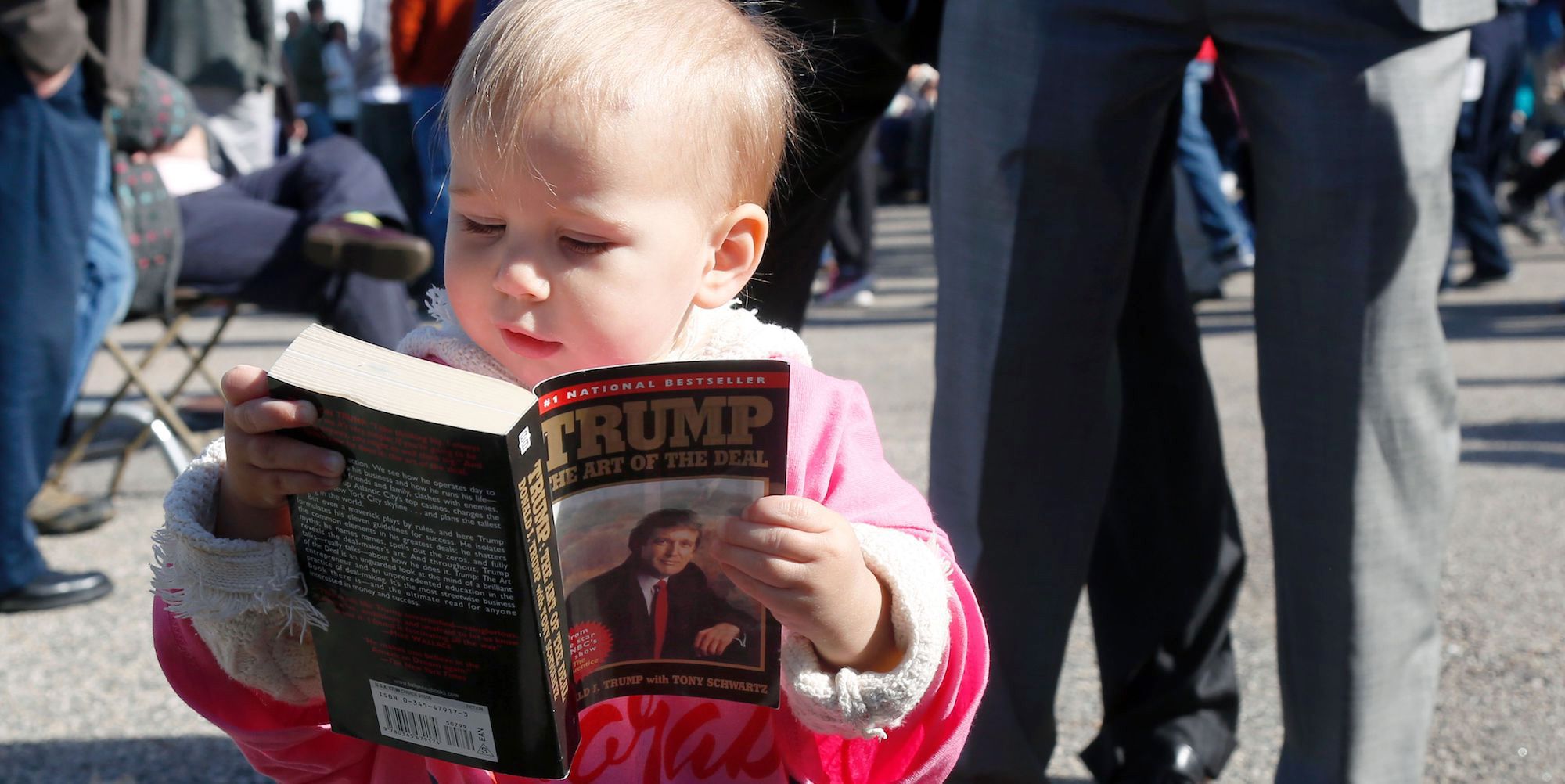Trump: The Art of the Deal – A Comprehensive Analysis

“Trump: The Art of the Deal,” published in 1987, is a book credited to Donald J. Trump and journalist Tony Schwartz. While marketed as a collaborative effort, its authorship has been a subject of considerable debate, with Schwartz claiming sole responsibility for the writing and Trump providing conflicting accounts. Regardless of the actual author, the book’s impact on business literature, popular culture, and Trump’s own public persona is undeniable. This analysis will examine the book through several lenses, considering its genre, reception, and enduring legacy.
Genre and Content

“Trump: The Art of the Deal” defies easy categorization. It blends elements of several genres:
1. Memoir/Autobiography:
The book presents itself as a glimpse into Trump’s life and business philosophy. It chronicles key moments in his career, from his early years in Queens to the development of high-profile projects like Trump Tower and the Grand Hyatt Hotel. However, the veracity of these accounts has been heavily contested (more on this later). The narrative style is often personal and anecdotal, aiming to convey Trump’s personality and decision-making processes.

2. Business Advice/Self-Help:
A significant portion of the book is dedicated to outlining Trump’s eleven-step “formula” for business success. Drawing inspiration from Norman Vincent Peale’s “The Power of Positive Thinking,” this section offers practical (though arguably subjective) guidance on negotiation, deal-making, and achieving ambitious goals. This aspect aligns the book with the popular self-help genre, providing readers with purported strategies for their own entrepreneurial endeavors.
3. Fictionalized Account:

Given the substantial discrepancies between the book’s narrative and independently verifiable facts, some critics have suggested the book should be considered a work of fiction. The portrayal of Trump as a singular driving force behind his successes, often against insurmountable odds, is seen by many as a carefully constructed, self-aggrandizing narrative. The extent to which the book is factual or fictionalized remains a point of ongoing debate and scrutiny.
Authorship and Development
The book’s creation process is as controversial as its content. Tony Schwartz, a journalist hired by Trump, has publicly stated that he was the book’s sole author. Schwartz’s account depicts Trump as minimally involved in the writing process, mainly offering input on the removal of certain critical passages. This is supported by the statements of Howard Kaminsky, the original publisher from Random House, who also claimed Trump had very little involvement in the creation of the book.
Trump, however, has presented conflicting accounts of his role, oscillating between claims of full authorship and acknowledging Schwartz’s contributions. This ambiguity fuels the ongoing debate about the book’s accuracy and the extent to which it reflects Trump’s genuine business practices and personality.
The unusual methods employed by Schwartz to gather information for the book are also noteworthy. Facing difficulties in conducting productive interviews with Trump, Schwartz resorted to listening in on Trump’s office phone calls over several months. This unconventional approach provided insights into Trump’s interactions and communication style. The resulting chapter, “Dealing: A Week in the Life,” became a blueprint for future autobiographical writing and generated substantial media attention before the book’s official release.
Publication and Promotion
“Trump: The Art of the Deal” was published in November 1987 by Random House, enjoying an aggressive marketing campaign to coincide with its release. Trump personally orchestrated this promotion, including appearances on television talk shows, placement on magazine covers, and a high-profile release party at Trump Tower.
Interestingly, Trump’s promotional efforts also delved into the realm of national politics. Several months prior to publication, Trump, working with his publicist and advisor, placed full-page advertisements in major newspapers criticizing Washington’s political system. This foray, though not a formal campaign, significantly boosted the book’s profile and contributed to Trump’s growing public visibility. This unusual blurring of lines between book promotion and political campaigning is notable for its successful, and far-reaching, impact on public opinion. Excerpts were also published in New York Magazine, further augmenting its pre-release hype.
Royalties and Charitable Donations
Trump and Schwartz agreed to split royalties on a 50/50 basis. Trump initially pledged to donate these proceeds to charitable causes, including aid for the homeless and veterans, as well as contributions to AIDS and multiple sclerosis research. Investigations, however, revealed that these donations fell far short of the promised amounts. The discrepancy between Trump’s promises and his actual donations to such causes only amplified questions regarding his character and public statements.
Subsequently, Schwartz chose to donate a portion of his royalties to organizations supporting immigrants, reflecting his personal values and a direct counterpoint to Trump’s political stances. This move underscored the divergence in views between the two individuals who were, initially, linked in the creation of the book.
Reception and Legacy
The book’s reception was varied. At its release, “Trump: The Art of the Deal” earned praise for its engaging style and insights into the world of high-stakes business dealings. However, critical appraisals later highlighted inconsistencies and exaggerations within the narrative, emphasizing the difference between the carefully crafted image of Trump presented in the book and reality. The book’s success, regardless of its factual accuracy, catapulted Trump into the public eye.
The book coined the now-infamous phrase “truthful hyperbole,” which became synonymous with Trump’s communication style. The phrase, intended as a form of positive self-promotion, was later ironically applied to describe misleading or false statements made by Trump and his administration officials. This ironic twist has made it an enduring emblem of Trump’s political tenure and the controversies surrounding it.
Questions of Veracity
Significant scrutiny has been applied to the book’s accuracy since its publication. Several biographies and journalistic investigations have challenged the narrative presented in the book. The book’s depiction of Trump’s business ventures often exaggerates his personal role and the magnitude of his successes, while minimizing the contributions of numerous other individuals. This embellishment is seen as both a strategic form of self-promotion and a carefully constructed personal narrative designed to bolster Trump’s public image. The book’s narrative and style, therefore, do not always reflect accurate or factual representations.
Specific instances, like the detailed account of Trump’s “first big deal” in Cincinnati, have been widely debunked. Similarly, the narrative surrounding the development of Trump Tower has been shown to exaggerate Trump’s individual efforts and downplay the significant role of his father and other business partners. This lack of factual accuracy has only increased doubt over many of Trump’s statements.
Adaptations and Cultural Impact
Beyond its literary impact, “Trump: The Art of the Deal” has left a significant cultural imprint. While earlier plans for a film adaptation largely failed to materialize, the book’s success inspired the creation of “The Apprentice,” a popular reality television show that cast Trump as a business mentor. The book’s success in itself boosted Trump’s profile and laid the foundation for his later career in politics. The book’s lasting impression on popular culture is undeniable.
In 2016, a satirical film, “Donald Trump’s The Art of the Deal: The Movie,” further solidified the book’s impact on popular imagination, satirizing Trump’s persona and the themes of the original work.
Conclusion
“Trump: The Art of the Deal” remains a fascinating and controversial book. Its status as a memoir, business guide, or even fiction is a matter of ongoing debate. However, its undeniable influence on business literature, popular culture, and Trump’s own trajectory is undeniable. The book, despite its contentious elements, presents a compelling case study in self-promotion and image-building, and its legacy continues to be debated and analyzed.